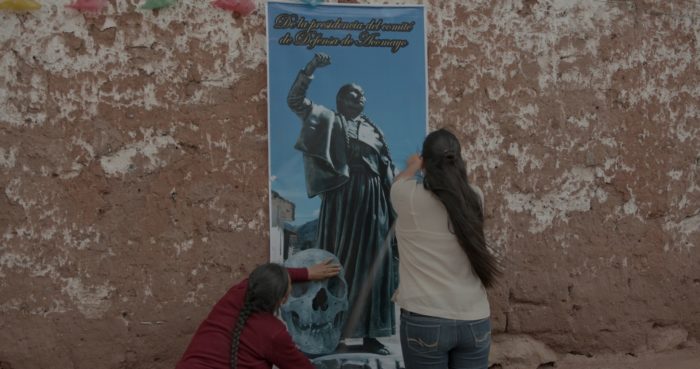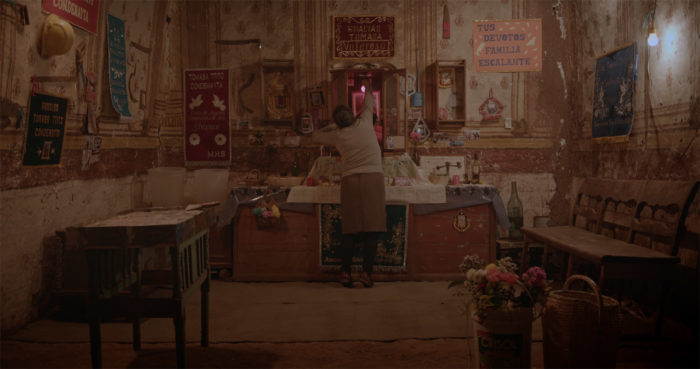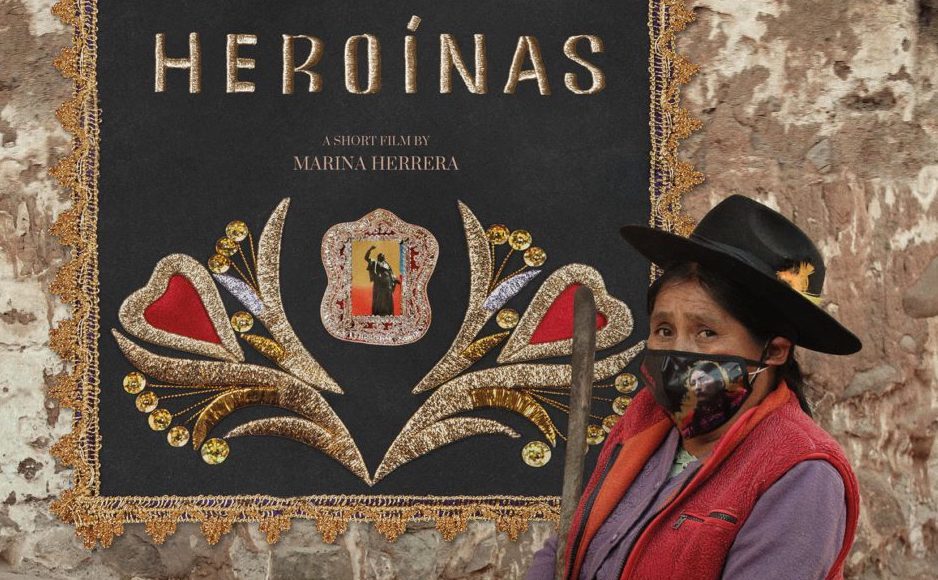Whilst Túpac Amaru II is hailed as the hero of the 1780 Andean Rebellion against the Spanish in Peru and later Bolivia, in comparison, little is known about Tomasa Tito Condemayta (1740 – 1781). Peruvian-Spanish filmmaker Marina Herrera Badell strives to address this imbalance in her debut short film ‘Heroínas’, which premiered at the Berlinale in February 2022.
Tomasa Tito was an Indigenous Quechua woman who led a female battalion in the fight for the independence of Peru, successfully defending Acos Bridge in her native province Acomayo in Southeast Peru against the Spanish. During the attempted siege of Cuzco, she was eventually executed along with Micaela Bastidas, another pioneering Indigenous leader against Spanish rule, and Túpac Amaru II, on 18 May 1781. Her decapitated head was sent to Acos as a warning.
Referred to as a ‘mockumentary’, ‘pseudo-documentary’, and ‘falso documental’, Herrera pays homage to the figure of Tomasa Tito in an unconventional way. In Heroínas, Tomasa Tito’s skull has been transformed into an objeto de culto (a cult object, or relic) which now sits at the centre of an ofrenda in the house of 91-year-old Natividad Villafuerte, where the women of the village worship and give offerings to the shrine. Whilst Tomasa Tito’s story is true, the existence of the shrine is fabricated by Herrera. Through fictionalizing the real, Herrera is able to present Heroínas as a retelling of Peruvian legacies from an Indigenous, female perspective.
Representation of Women
The idea for the film was inspired by the Niño Compadrito, a mummy-like figure who has gained cult status in Cuzco and whose shrine can be found in the mysterious home of an elderly man. Herrera wanted to reimagine this objeto de culto for the Bicentennial celebration of Peruvian Independence and, rather than choose a male figure, Tomasa Tito emerged as an appropriate protagonist. In Herrera’s words: ‘Since many women have been excluded from history books […] what I wanted to do was find a local heroine who wasn’t linked to a masculine figure’. And apart from a scattering of men in the scene of the village celebration where they celebrate Tomasa Tito’s anniversary, Herrera’s film primarily depicts, and amplifies, female voices.
The opening scene shows female worshippers queuing up outside Natividad’s door. Some are armed with machetes whilst others carry bunches of flowers. ‘At the time she didn’t have these things to defend herself,’ explains one of the disciples. These peculiar offerings are accompanied by various motives for visiting the skull. Some ask for good grades, for help at work, for ‘la fuerza de seguir adelante’ (the strength to keep going). These wishes all represent genuine desires on the part of Peruvian women, but these quotidian needs are rarely expressed within the medium of film.

False Documentary
Herrera’s depiction of this community is made all the more unique by framing the film as a ‘false documentary’. There are moments where it is easy to forget that Tomasa Tito’s shrine isn’t real. Herrera uses elements of reality, such as Tomasa Tito as a historical figure and the objeto de culto tradition, to create a false reality in which the viewer hears and sees women’s real histories. She does this precisely through using the same techniques that a conventional documentary might use; talking heads, direct interviews, as well as observational filmmaking.
In one particular scene, Natividad and her daughter sit in the courtyard of her house chatting in Quechua about the presence of cameras, whilst Herrera’s camera sits behind them. Although scripted, this conversation – much like the reasons the women give for visiting the shrine – represents what could be a real interaction. They both agree that the presence of the cameras is something positive, so people can learn about Tomasa Tito and continue her legacy. Natividad also comments that it is only her daughter who comes to visit her, and none of her sons, reminding the viewer again of the female-only cast.
Comically, the goat that will be prepared for the crew to eat is also, they reveal, called Tomasa. This self-reflexive scene mocks an industry which still heavily favours the male gaze and story. The dialogue is self-aware and breaks the fourth wall without acknowledging the camera. It is Herrera, a female director, who is behind the camera and filming the interaction between the women. Ultimately, Herrera wants us to know that this scene and the film aren’t real, but at the same time she wants us to listen to a community of female voices; a community which does not usually have access to the same platforms.

Historical Representation
The release of Heroínas shortly follows the inauguration of a bust of Tomasa Tito in July, 2021 in the district of Pueblo Libre, Lima. Herrera’s debut is therefore a timely contribution to the legacy of Tomasa Tito. It will also be followed by Valientes, a project in progress by filmmaker Alejandro Salas Córdova, about the history of female authorities in Andean pueblos. Audiovisual representation is gaining ground, but when the more well-established film industries of Mexico, Chile, and Argentina are favoured by streaming platforms, progress is slow.
Alongside a lack of financial support in Peru’s film industry, historical reparations for indigenous figures often end up as forms of ‘gesture politics’. According to a report by La República, in 2021 the Peruvian Ministry of Culture used the wrong image (that of Bolivian Bartolina Sisa) in a commemorative stamp for Tomasa Tito. Through its subject matter, Heroínas is a historical retelling, but Herrera ensures that her film does not fall into the snare of gesture politics. As both storyteller and director, she manages to weave a tale of community, tradition, and feminism, through the lens of factual filmmaking. It is a unique and creative contribution towards the documentary genre.



